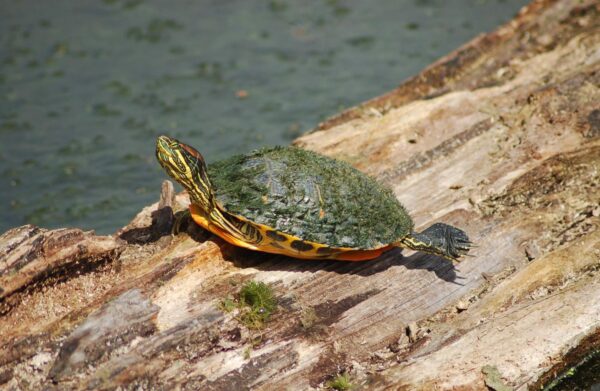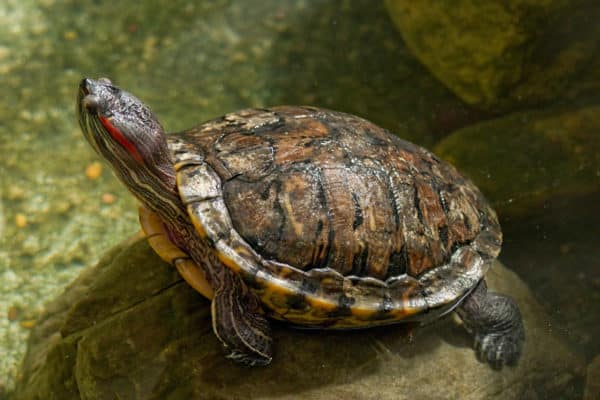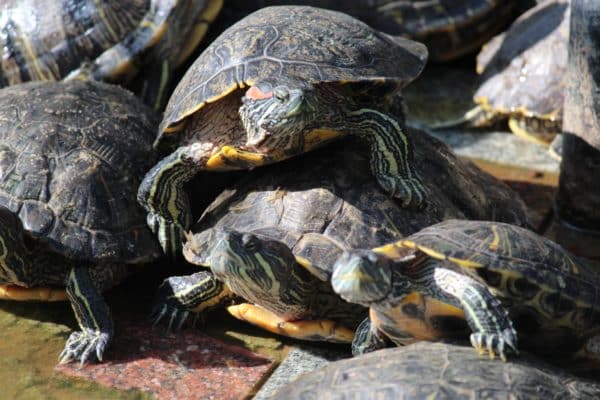Red-eared slider turtle
Warning
Red-eared slider turtles are reptiles and can carry Salmonella and other illness/disease causing pathogens.
About This Species
Red-eared sliders (Red-eared terrapin) are popular pets in many parts of the world, especially when they are young and small. Unfortunately, many pet owners have released Red-eared sliders into natural ecosystems, likely after the turtles grew to full size and became more difficult to care for. This is likely how the Red-eared slider was introduced to BC’s wetlands. Their native range stretches from the Southeastern US to Brazil.
Red-eared sliders compete with native turtles for basking sites, food, and habitat and may carry diseases such as Salmonella bacteria. They are considered a threat to the endangered Western painted turtle because they carry several respiratory diseases harmful to turtles (COSEWIC 2016). Red-eared sliders prefer warm, stagnant water with lots of vegetation, like ponds and the shallow ends of lakes. They feed on aquatic plants and insects, crayfish, snails, tadpoles and fish, and even small frogs. Red-eared sliders are designated as a Regional Containment/Control species by the BC Provincial Priority Invasive Species List.
Female sliders make nests and lay eggs in April-May and can lay up to four clutches of eggs per year. Each clutch may contain between 4-23 eggs. Red-eared sliders can live up to 40 years. During the winter, they hibernate in hollow logs or partially buried in the mud at the bottom of ponds.
How to Identify
Red-eared sliders’ most recognizable feature is the red patches just behind their eyes. These range in colour from bright cherry red to a ruddy brown. These turtles have green stripes going down their neck, along their legs and feet, and on their tail. Adults are typically 28 cm in length. The bottom of their shell (the plastron) is yellow with two rows of brown splotches, and the top of their shell (the carapace) is dark green and brown with a slight keel running down the center.
For a detailed photo guide on how to identify this turtle and the endangered Western painted turtle, see the BC Turtle Watch ID Guide.

Take Action
Prevention is the best approach.
-
If you need advice about invasive species on your property or you are concerned about reported invasives in your local area, contact your local government or regional invasive species organization.

Don't Let It Loose
Learn about best practices
Invasive species are plants, animals or other organisms that are not native to BC, and have serious impacts on our environment, economy and society. Never release your plants and animals into the wild or dump aquariums or water garden debris into rivers, streams, lakes or storm sewers!
REPORT TO PROTECT BC’S BIODIVERSITY

Use the app
Observe and report to protect BC’s biodiversity

Report through this website
Use our form to tell us what you’re seeing and where.


















